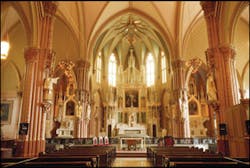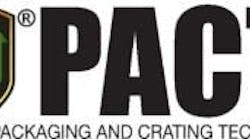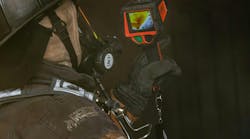Normally, when someone calls 911 and requests the fire department, the nature and location of the emergency is obvious. Family members lead us to ill patients, and the location of an injury collision is usually evident based on visual evidence such as steam pouring from two automobiles stopped at odd angles in an intersection. To locate structure fires, firefighters follow the trail of smoke and the orange glow of the fire.
There are occasions, however, when the fire is hidden from view. A hint of smoke or a strange odor may be the only evidence of a concealed conflagration. In these circumstances, a thermal imager (TI) may be the difference between a successful stop and a defensive operation.
Saving Time and Money
In July 2003, the Stevens Point, WI, Fire Department demonstrated how a thermal imager can save fire companies a significant amount of time. Companies were sent to the local high school to investigate a smoke odor. On arrival, firefighters learned that repair crews had been performing welding operations in the hallway earlier that day. A fire company scanned the area with its thermal imager and quickly discovered a hot spot just above the site where welding had taken place. Removing the drop ceiling revealed a small fire, which was quickly extinguished with just two water cans.
Proper use of the TI saved the firefighters a great deal of time and avoided significant damage to the building. Had the hidden fire grown undetected, the department likely would have responded in the middle of the night to a full-alarm structure fire. The ceiling in the hallway area required replacement, at a cost just over $8,500. The value of the building alone was in excess of $29 million.
In Medford Lakes, NJ, firefighters used their TI to not only find a hidden fire, but to identify which house was on fire. A midnight dispatch to investigate a smoke odor outside brought firefighters to the neighborhood, but the absence of smoke and obvious fire left the crew at a loss. One firefighter noticed a slight haze about one block from the original caller, and his creative captain scanned several houses with the TI. Two houses appeared gray on the TI, but a third had a hot roof and attic that showed as bright white. Further investigation led firefighters to locate an attic fire in this home. The owners were away at the time, and the fire could have gone undiscovered until it was burning through the roof. Instead, firefighters had the fire extinguished within 20 minutes, and they were able to keep the electrical fire from damaging any major structural members. Proper TI use prevented an extended incident as well as significant property loss.
Proper Use
Each of the success stories above demonstrates how proper use of a TI can lead to saving time and preserving property. Proper use is the key, however. Remember that the TI does not “see through†most materials. It shows that the hidden fire has warmed the surface material in comparison to the rest of the building. In order to properly use your thermal imager in these types of size-ups, you must:
Use the TI to compare areas or buildings, noting unusual or odd areas of heat accumulation.
Use these comparisons to formulate an logical explanation for what is being displayed on the TI.
Understand building construction and materials and how they may retain or hide heat.
Understand how environmental issues, including the sun, boiler rooms, and other high-heat sources, can affect the thermal signature of a building and its components.
Verify, when at all possible, suspected problem areas with traditional investigative means (small inspection holes, feeling with a hand for heat, etc.).
Not use the thermal imager as the sole basis for believing that a heat source indicates a hidden fire.
Conclusions
Hidden fires pose numerous challenges and dangers. Finding these smoldering dangers frequently involves numerous inspection holes or merely waiting for the fire to break into the open. By properly using their thermal imagers, firefighters can locate these fires faster, saving themselves tremendous amounts of time and energy. Prompt identification of a hidden fire also can result in significant property savings, as the fire is extinguished with less water and with less damage by fire, smoke and firefighters.
For several more stories about successfully locating hidden fires with the aide of a TI, visit the Technology section of Firehouse.com.
Jonathan Bastian is a thermal imaging specialist for Bullard. He is certified as a thermal imaging instructor by the Law Enforcement Thermographers’ Association (LETA). He is also the author of the FD Training Network “FireNotes†book, Thermal Imaging for the Fire Service. Bastian served 12 years on the North Park, IL, Fire Department, including the last three as a captain. He has taught classes on thermal imaging, rapid intervention teams and search and rescue operations. He is currently a public safety official in Central Kentucky. If you have questions about thermal imaging, please send them to [email protected].






